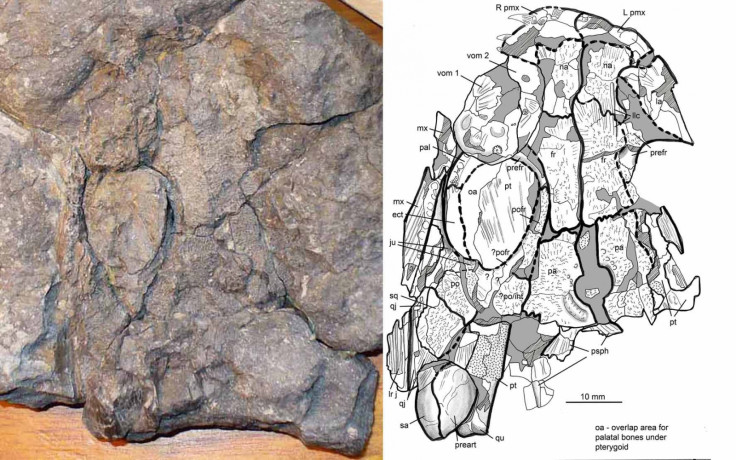Mystery of 20 million years of missing fossils solved with five new species
An 'explosion' of evolutionary diversity occurred when four-legged animals took their first steps on land.

Researchers have found fossils of five new species that date from a period that previously represented a large gap in the fossil record, filling in crucial details of the first stages of animals that walked on land on four legs.
The gap was more than 20 million years, just after a mass extinction event about 358 million years ago. "It's a time when some crucial evolutionary steps were taken, literally," study author Jennifer Clack of the University of Cambridge told IBTimes UK. The findings are published in the journal Nature.
First steps
The findings of the new species show some of the earliest four-legged vertebrates, or tetrapods, to walk on land. "We had trackways before, but not the animals to go with them," says Clack.
These additions to the fossil record suggest that amphibians split off early on from the rest of the tetrapods, which gave rise to reptiles, birds and mammals.
The fossils were dug up from the Scottish Borders area in the UK. Two are amphibians and three are other early tetrapods from the Tournaisian period, just a few million years after the mass extinction.
Plenty of oxygen
It had previously been thought that the gap in the fossil record was because there were few tetrapods around on land due to low levels of oxygen in the atmosphere.
"That never made any sense to me, because there would be less oxygen in the water than in the air," says Clack. "What we found was that the oxygen levels [in the air] weren't particularly low."

Clack and her colleagues found deposits of charcoal from throughout the period, which showed that wet plant matter had been burning. "Wet plant material can't burn below 16% oxygen – we found charcoal throughout our sequence," says Clack. "Oxygen levels were more like 20%."
Kick start
The findings overturn the idea that evolutionary diversity took a long time to kick off again after the mass extinction. "We've shown that's not the case," says Clack. "We've got decent, dog-sized or small crocodile-sized animals only a few million years after the extinction, and toe-bones from 1 million years before that.
"This diversity almost exploded pretty quickly. The recovery was much more rapid and more explosive than previously imagined."
© Copyright IBTimes 2025. All rights reserved.






















